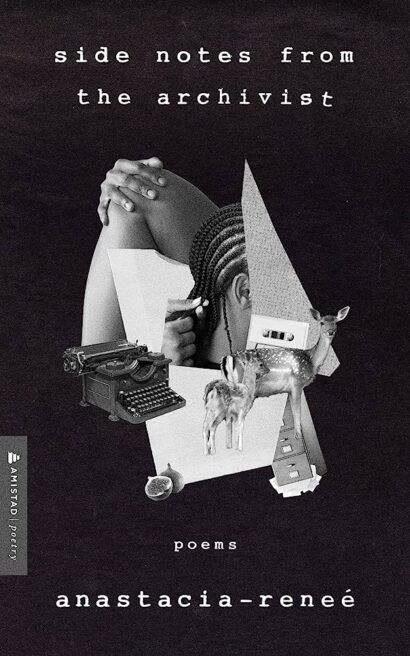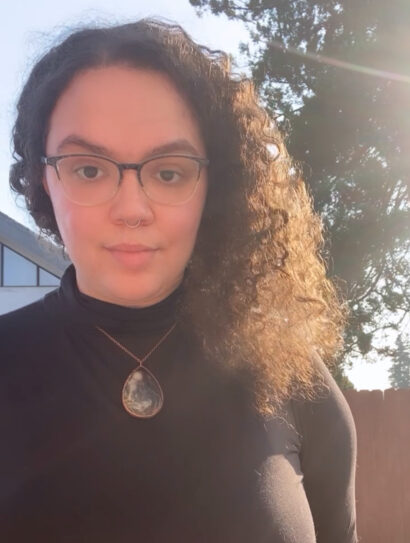Book Review: Anastacia-Renée’s Side Notes from the Archivist

Side Notes from the Archivist by Anastacia-Renée (HarperCollins, 2023)
This most recent collection of poetry from Anastacia-Reneé, Side Notes from the Archivist, is rich with beauty and nostalgia, a vivid plumage of detail and unflinching intimacy. The author invites us to experience an archive through the voice of the archivist and their side notes. In this book, full of Black femininity, identity and history, she asks the reader to take a listening and learning role. This collection of poems makes room for the open and precise exploration needed to create an expansive archive.
In the beginning, we are presented with a door. A photo of a white door, in a bare room, set against a black background. Wooden floors and a faint shadow greet the reader, setting off a journey into the archive. The photograph of a door is both part of and an entrance into this collection of poetry. From this place of beginning (and being) the reader meets this archivist in the 1980’s and moves among a collected past, current, and future. To do this, Reneé engages multiple mediums, including poetry, research, and visual art from her 2021 exhibition at the Frye Art Museum “(Don’t Be Absurd) Alice in Parts.” Each poem in this collection builds, effortlessly, into a breathing document curated by the archivist. The author details sense and experience, presented as an intricate web of reference, culture, and memory.
We are first introduced to the archivist through their ways of remembering, creating, and expressing their collection. True to the title, the archivist speaks to the reader in side notes. Here, archive is defined as “a collection of documents or records or poems or lists or thoughts or music or breaths or blank spaces providing information about a womb, place, institution, memory, ancestors, spirits, community, coven, house or group of people.” Through this we are given a look into the archive as a kaleidoscope of lyric textures and visceral imagery.
A layering of sense and memory occur throughout the book, particularly in the poems “1983 (2),” “episode 0,” “Kondo Living,” and “Aunt Jemima’s Crown.” Similarly, in “Black Marsha (P) Johnson,” the past and present of Black history are held in the same hand. Settled into verse and actuality, she writes as, and in conversation with, Marsha P. Johnson. Marsha asks: “are the girls still dying?” to which the archivist replies “yes.” Here, Reneé unfolds the past into the current. She presents these realities exactly as an archivist – with insistence and care.
Side Notes from the Archivist breathes with physicality. We find that breath in the efforts of the archivist, in the collected and collective histories of Black culture. Reneé not only opens a door into the archive but creates spaces for all types of Black femme identities. She has created a living record, one that expands in the chest like a breath.
Tanya L. Young is a BIPOC writer and artist. She is an MFA candidate at Western Washington University. Her work has been featured in publications like Salt Hill, Santa Clara Review, New York Quarterly, and others. She is the Poetry Editor for Bellingham Review and staff reader at Maine Review.
